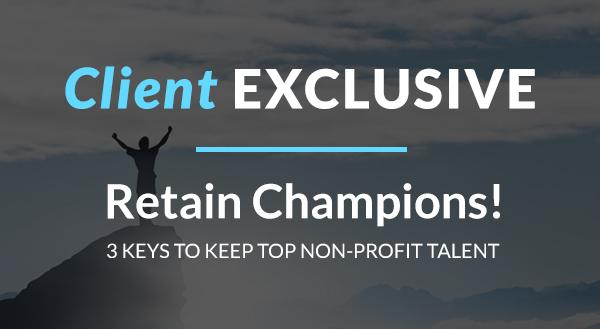Re-examine your recruitment strategy
Sometimes the key to retaining is having a good fit in the first place. Avoid the square peg round hole syndrome by partnering with professionals that know your specific nonprofit space. Especially in cause based organizations, it is important that the candidates be applying for more than just a job. Accepting candidates from non-retained sources typically results in volume over quality. The incentive for non-retained is to end the search in order to get paid, rather than take the time to find the right candidate who is looking for a career and will stick well with your organization’s mission for intrinsic reasons above and beyond the job requirements.
Finding passive candidates is most critical when trying to fill a hole in leadership. Passive candidates have their head down achieving the tasks at hand which is what makes them excellent, but they are willing to explore career growth opportunities. We recommend clients do everything possible to establish a culture where people want to work. Even at first glance, think about what candidates see your organization posting on social media or how excited is your team in videos about your mission.
Promote your values and cultures
Nonprofits that promote their values and culture to candidates and employees send a positive message. The right nonprofit professionals will share passions for the group. Encouraging a job well done, team gatherings outside of work, healthy lifestyle programs, and quality feedback loops will attract and retain top talent employees. Nonprofits often work whenever there is programming or fundraising activity. This means it is often when business and medical professionals are not working. Since nonprofit leaders work when others don’t, nonprofits should focus on a more flexible work schedule and talk about the motivation derived from “working for a cause”; something that for-profit companies cannot claim.
Challenge top performers and give them good feedback
While Non-Profits offer the opportunity to work for the greater good; they must also provide other incentives to retain employees. Top performers want metrics and feedback so they can demonstrate their ability to over achieve. Too often nonprofits are unprepared to provide clear information on standard procedures and expectations, so the first year extremely talented individuals feel unproductive and their peers are confused. Consider what your first 90 days look like with new employees and find ways to promote your new employee’s decision to join your cause. Build up their personal brand and express gratitude for their efforts. Make sure the current employees know that they are part of training the new employee, even if that new employee outranks them.






